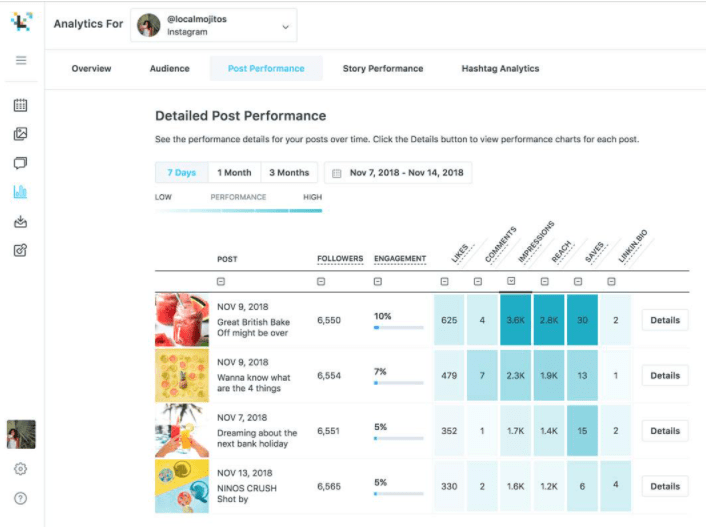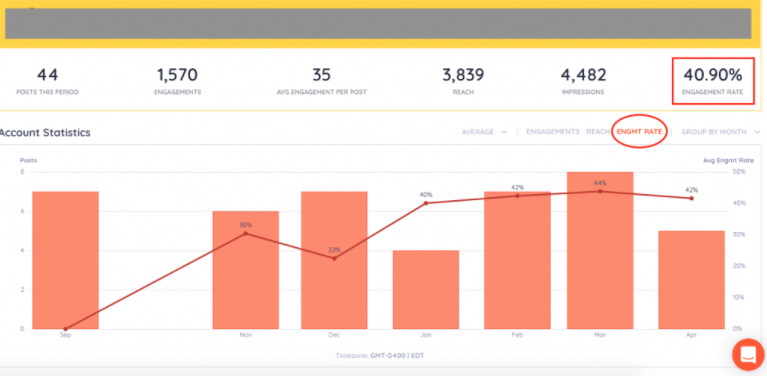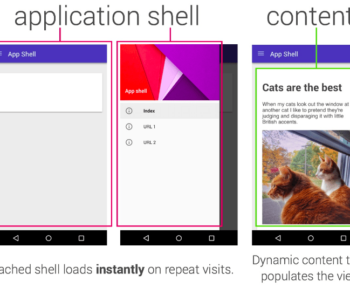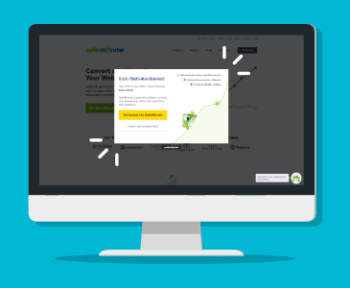Have you ever interacted on social media through like, share, follow comments. Yes, that is what simply an engagement means.
Blogs, Facebook posts, tweets, and photos all have an engagement rate on Instagram. How many visitors are interacting with your brand?
Table of Contents
What is Engagement Rate?
Engagement rate is a metric used to measure the average interaction your social media content receives per follower.
The engagement rate is calculated by dividing the number of interactions your content receives by the number of your total followers, multiplied by 100%.
Simply put, it’s a measure of how well your content works independently of the number of your followers.
What is considered as a factor depends on the platform, but often refers to likes, reactions, shares, and comments.
How many comments did you get on that post? How many shares did that blog get?
Generally the higher your customer engagement rate, the better your content – which is great for SEO.
If search engines see that customers are interacting with your website and social media channels, you will find yourself a recognizable source in your industry.
Why should you keep track of engagement rates?
Since one of the factors is the number of your followers, your engagement rate provides an honest estimate of the quality of your content.
For example, even if a brand has millions of followers, if it receives only a few dozen interactions per post, it may not produce high-quality content.

Compare this to an account with only a few thousand followers, but receive tons of shares and comments each time. This achieves a high engagement rate.
Engagement rates can be an indication of an imbalance between the content you produce and your audience. If you have a low engagement rate, you are likely to gain a large number of non-target customers.
Or maybe, you can only reach the following from the brand identity, but you are not creating the content that your audience wants.
How to calculate Engagement Rate?
Here is the formula to calculate Engagement Rate:

Where,
Total engagement refers to the number of interactions (the measure of which depends on the stage); And,
Total followers refer to the total number of people following the account/page / etc.
Total engagement is calculated differently depending on the platform. For example:
Total engagement on Facebook includes total shares, likes, reactions, and comments
The whole engagement on Instagram has all the likes and comments.
It is important to note that the “total engagement” can be changed in any way by the user using the metric. For example, the user may want to include only the total number of likes in the total engagement on Facebook. Such changes are valid only if the user uses the same method of determining total engagement in all its calculations. For example, consider the following Facebook pages, each of which created a brand promotional post:

What is a Good Engagement Rate?
To determine if your engagement rate is good or bad, it should be benchmarked against something else. And you can start by asking yourself what your ultimate goal is and measure accordingly. learn about bounce rate

- How your content works over a period of time
- Compare your performance with competitors (benchmarks against your main competitors)
- Create a Benchmark for Your Industry’s Social Media Engagement Performance (Benchmarked
- Against Top Industry Players)
- Compare your performance on different social media platforms. (Benchmark against your own
- social media profiles).
Generally, it takes hours to calculate or report. However, a tool like a keyhole calculates your engagement rate in real-time and in seconds. You can also see how your content works over time, as well as you can use “Compare” to stack your profiles against each other and competitors. Learn about KPIs from here.
Engagement rate example
Analyst at XYZ, a company that maintains a social media page on Instagram. As part of the analysis process, the company will also determine how many followers are engaged with the Instagram page. The analyst also found two comparable companies. Looking at the information below, does the company see a higher engagement rate than XYZ comparisons?

As a method of determining total engagement, the engagement rate for each company is as follows, using total likes, total shares, and total comments:
Company XYZ = (54,321 + 1,523 + 105,231) / 5,123,501 x 100 = 3.14%
Comparable 1 = (74,321 + 2,191 + 116,954) / 10,421,412 x 100 = 1.86%
Comparable 2 = (65,121 + 945 + 94,512) / 6,321,512 x 100 = 2.54%
From the above data, the company saw a higher engagement rate than ABC comparable. Note, the company ABC registered a small number of followers but enjoyed the highest engagement rate. It received only about 106,000 comments about 117,000 of comparator 1, but that number came from more than half the followers of comparator 1 page. Numbers mean that the content on a company’s Facebook page is more attractive to followers than similar pages.
Conclusion
Engagement rate provides a more accurate representation of content performance than looking at individual absolute measurements of likes, comments, shares, etc. This is a more comprehensive metric.
As shown in the example above, although Comparator 1 attracts more followers, they have lower engagement rates. This effectively indicates that the content of comparator 1 is not of high quality. Overall, Calculating the engagement rate is good to track the performance of your post, publishing, etc.






2 Comments
1 btc kaç tl
Very nice post. I just stumbled upon your blog and wanted to say that I’ve really enjoyed browsing your blog posts. In any case I’ll be subscribing to your feed and I hope you write again soon!